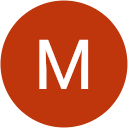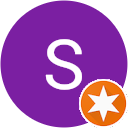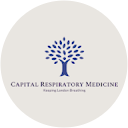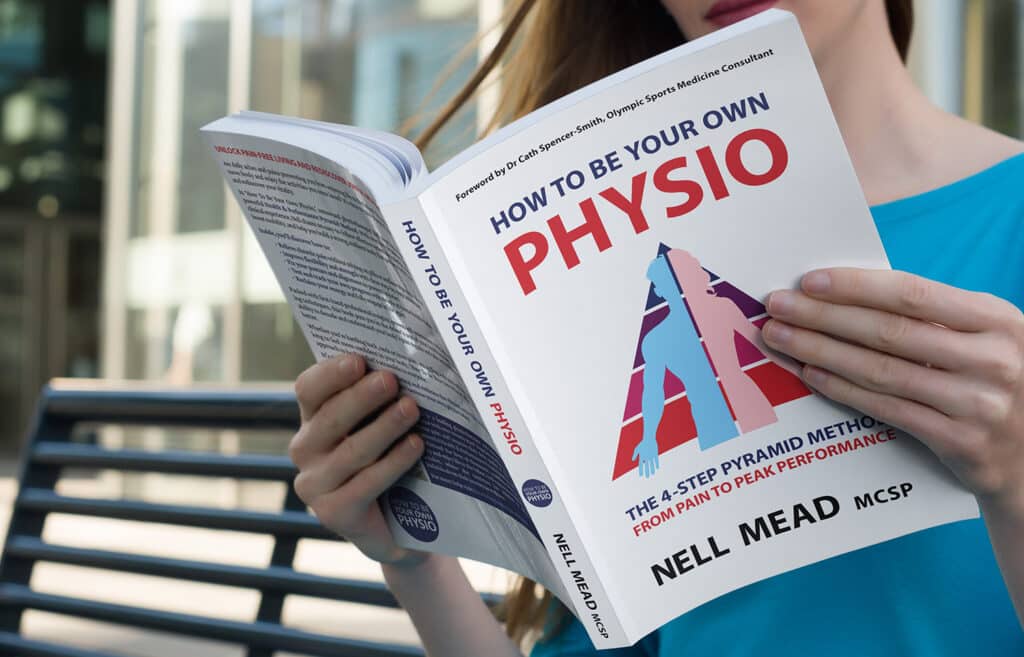My patient, A, recently underwent laparoscopic surgery to remove a 10cm uterine fibroid. This is the third and final part of her blog. In the first part she described her diagnosis and preparation for surgery, and in the second she described her experience of hospital.
Home again
I’m home again. My brightly coloured bouquet of flowers lifts my spirit instantly. I get ready for bed, hoping to have an early night, but realise I can’t adjust the position of my bed, so I turn to some DIY alternative and get some cushions for extra support. I realise I am completely unprepared and have to make things up as I go along. As I sink into my pile of cushions, I am so glad to be in my bed and look forward to a restful night.
First shower
It’s Thursday, and getting out of bed is not a problem. The added support from all the cushions is a big help. I sit on the edge of the bed and give myself a minute before I stand up. The nurse did say I can shower with the dressing on, but I have never had four big dressings on my abdomen. I also need to wash my hair. Suddenly, all the things I do every day and take for granted need thinking through. We have a spacious walk-in shower, but there are no handles to hold onto. Luckily, we have a foldable plastic step stool to reach the upper cupboards. That way, I can at least sit down and wash my hair without having to worry about falling. If I had to prepare for surgery again, I would get a plastic shower stool and a shower suction handle from the Complete Care Shop.
My bag of medicine
Today, I start my course of antibiotics. I do have to take these, as I definitely don’t want any infections. I look at all the other meds and struggle to remember what each of them was for. I’ll have to read the leaflet again. There’s also a useful A–Z directory of medicines on the NHS website.
Despite all the pain medication, I decide to take one paracetamol but after four hours, I don’t even think about painkillers, and I don’t feel in pain.
Exercise and healthy food
Recovering from surgery obviously limits my choice of exercise, but walking is safe. I am also glad to have a bit more choice in what I eat. Right now, I am expecting a lot from my body; I want to be without pain, recover as quickly as possible so I nurture my body with simple and healthy fresh food.
Fewer cushions
As the days pass, I am able to reduce my pile of cushions and start lying down completely. I also don’t need the cushions to get out of bed anymore.
First-time fresh air
Tech Man has a surprise for me: a bag from the White Company with a pair of really soft cashmere joggers. I couldn’t ask for anything more comfortable. After five days indoors, we walk around the city to get some fresh air.
No more painkillers
Every day, I am making progress. I am resting, eating well and taking my antibiotics. It is now five days after my surgery, and today is the first day I don’t take any painkillers. I walk every day, eat well, take my Lean Greens powder, I do Nell’s Lymphatic Mojo routine every single day, which really supports the body in removing cellular waste to get things moving and support the healing.
After I finish my antibiotics, I replenish my gut with some good bacteria from probiotics. Antibiotics don’t just kill the bad bacteria; they kill the good bacteria in our guts too. The World Gastroenterology Organisation defines probiotics as live microorganisms that, when administered in adequate amounts, confer a health benefit on the host. I get a bottle of Naked Biotics for my daily bacteria shot. It’s like drinking some kind of fermented juice. [ED – please email admin@nellmead.com for discounts on Lean Greens and Nutri Advanced supplements.]
My two-week post-op consultation
It’s two weeks since my surgery, and I have an appointment with Mr Pisal to have my dressings removed. It is amazing to see how clean the areas around the incisions look. You would have thought there’d be big bruises but there are no bruises.
Mr Pisal prescribes me a scar cream to make sure they heal well. Kelo-Cote is a silicone scar treatment that softens and flattens surgical scars. It also reduces the itchiness. I buy scar reducer patches from Elastoplast. Their website also has a useful guide on post-operative wound treatment and how to treat and prevent scars. The patches are like see-through stretchy jelly plasters and are really easy to administer.
Getting used to scars
The incisions heal, but mentally, it takes a bit to get used to having scars on my body. The small scars from the laparoscope will probably heal really well and become invisible. The one that is 5 cm long nobody will notice, as it is below the bikini line, but scars fade and heal over time. I am glad to see Nell for my first post-op physio session.
My two-week post-op physio
Nell is the kind of person you want on your journey from surgery to recovery. She’s had surgery herself and knows what it is like. And at the time of writing, she’s facing knee surgery and has shared her experience on her blog. Her blog details her injury, her diagnosis, how she prepared for surgery, her prehab and how to optimise tissue metabolism and healing.
Surgery is stressful for the body, and physio can make a huge difference. While I am cautious with my scars, Nell goes straight to work with scar massage. Scar massage is designed to improve tissue mobility. The massage also helps to get my lymphatic system working again. Nell introduces me to a handheld massage tool, and Dr Graeme’s handheld massager is just perfect for home use. The penetrating vibration stimulates the lymphatic system. In his guide, he explains how vibration relaxes muscles, stimulates blood circulation, reduces pain, speeds up recovery and assists in healing.
My four-week post-op physio
Four weeks have now passed, and I feel I need to find a safe way to transition back into my fitness programme. I make an appointment with Tracey Matthews at the White Hart Clinic. Tracey is an expert in all things pelvic floor and a fully trained pelvic floor physiotherapist. She is also a member of the POGP. So, I make an appointment for a functional pelvic floor assessment to make sure my pelvic floor muscles are fully functioning. She designs a complete pelvic floor exercise programme for me, which is delivered by a fancy physio app that allows you to track your progress. The difference between her programme and the generic exercises recommended by the NHS is that Tracey’s programme is tailored to my specific needs.
Week four is when I start to be more active in the gym. I use the stationary bike and do my pelvic floor exercises. I can feel how, with each passing week, my body feels stronger, and I’m getting back to normal.
My six-week post-op scan
It is now six weeks since I had my surgery, and I have my ultrasound scan with London Gynaecology to check that my internal incisions have all healed and everything looks fine. I feel very much that I have fully recovered. Mr Pisal gives me the all-clear, and Chris is already sending me my next fitness programme.
My six-week post-op hydrotherapy
Nell has suggested I do some aqua physio. Selvia Guerguis runs London Hydrotherapy and has a wealth of experience. She doesn’t just work with patients who are recovering from surgery, she also works with marathon runners who want to improve their fitness while going easy on their joints.
Selvia explains, ‘There are many benefits to be had in the hydrotherapy pool. The buoyancy property of water means you can exercise without applying too much pressure on your joints, but at the same time, the exercises can be made harder and more challenging by making you work against the turbulence of the water, which is harder than it sounds. The warm water helps muscles to relax and reduces pain and spasms. Being in the pool helps with improving circulation and optimises healing.’
In my session, we exercise with foam noodles, foam dumbbells, float boards and flippers, and I soon find out that standing on one leg in water is a lot harder than on land. Hydrotherapy is a really fun way to get fit again, and if you are not quite ready to push down dumbbells, walking in water is a great low-impact cardio workout that not only improves muscle tone but is also gentle on your joints.
My four-month post-op assessment: fine-tuning
Elizabeth Banks is a movement neurology coach, and she explains to me that our ability to move and balance well requires our brain and our nervous system to coordinate three vital systems:
- The visual (our eyes): The visual system transmits information about the environment around us to our brain.
- The vestibular (our ears): The vestibular system relates to our inner ear and provides the brain with information about where we are in space.
- The proprioceptive (joint position sensing) system: The proprioceptive system allows our brain to produce accurate movement from the signals it receives from nerve endings, joints, muscles and skin.
All three systems have to work together. This happens through the cerebellum which helps us coordinate movement and maintain balance and posture.
My brain says no
As I work through Chris’s exercise programme (yes, I am back training again) and attempt a side plank leg raise, my leg isn’t moving. I know it is not due to my lack of strength or balance. I’ve done these before, but it’s like someone has cut the wire and the signal isn’t getting to my muscles. It’s not happening, no movement.
Assessing my system
Elizabeth is an expert in everything about movement. My assessment includes moving my head in various directions while my eyes stay focused on a fixed point. Another exercise involves me marching on the spot with my arms stretched forward and my eyes closed. I am drifting from my initial position, and it is clear my system is well and truly out of synch. When I see my chart, there are more red than green lines.
The good news is, it is easy to fix, and with the help of Elizabeth’s exercises, my system is in synch again. Two weeks later, I can do my side plank leg lift again.
Neuroscience is changing sports. Optimal physical performance is only possible if the brain receives high-quality information from our eyes, balance system and the body.
Some final thoughts
I have had a much quicker recovery than anyone told me I would have. I am 52, and I think many were surprised. I was very proactive and did a lot of research myself. I had a very experienced surgeon. My anaesthetist was first-class. My team of physiotherapists are the most talented ladies that achieve incredible results.
My scars
As I look in the mirror, I notice how my scars have faded and become barely noticeable. They are thin and flat. No folds or lines of tension and no elevation. There’s no itching and I don’t even think about them anymore.
Be a hero
I am fascinated by how the mechanism of storytelling is often a reflection of our lives. We are the heroes of our own stories. Even if we don’t get to choose our story (e.g. needing surgery), there’s a lot we can learn from the Hero’s Journey and the three-act structure. It’s a pattern that has existed for thousands of years.
Accept the journey
Being a hero is not about being strong but about accepting the journey that lies ahead of us: overcoming difficulties and crises and facing our fears. That’s when we get to know ourselves – in the moments when we face our deepest fears.
It is my sincere wish that my story is a companion to your journey, whatever you may face, and I hope it will help you feel more assured and ready to face surgery. Have faith, rise to the challenge and be your own hero.
This is a condensed version of A’s full story. If you would like to read the whole thing, click here to download it.







